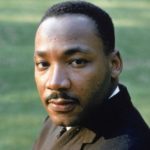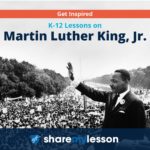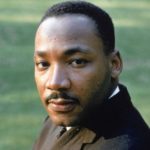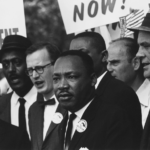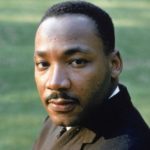This lesson introduces students to Martin Luther King, Jr.’s philosophy of nonviolence and the teachings of Mohandas K. Gandhi that influenced King’s views. After considering the political impact of this philosophy, students explore its relevance to personal life. (Duration: 2 class periods)
Learning Objectives:
To examine the philosophy of nonviolence developed by Martin Luther King, Jr.
To consider how this philosophy translated into practice during the Civil Rights Movement.
To explore the relationship between King’s teachings on nonviolence and those of Mohandas K. Gandhi.
To reflect on the relevance of nonviolence to one’s personal conduct in everyday life.
